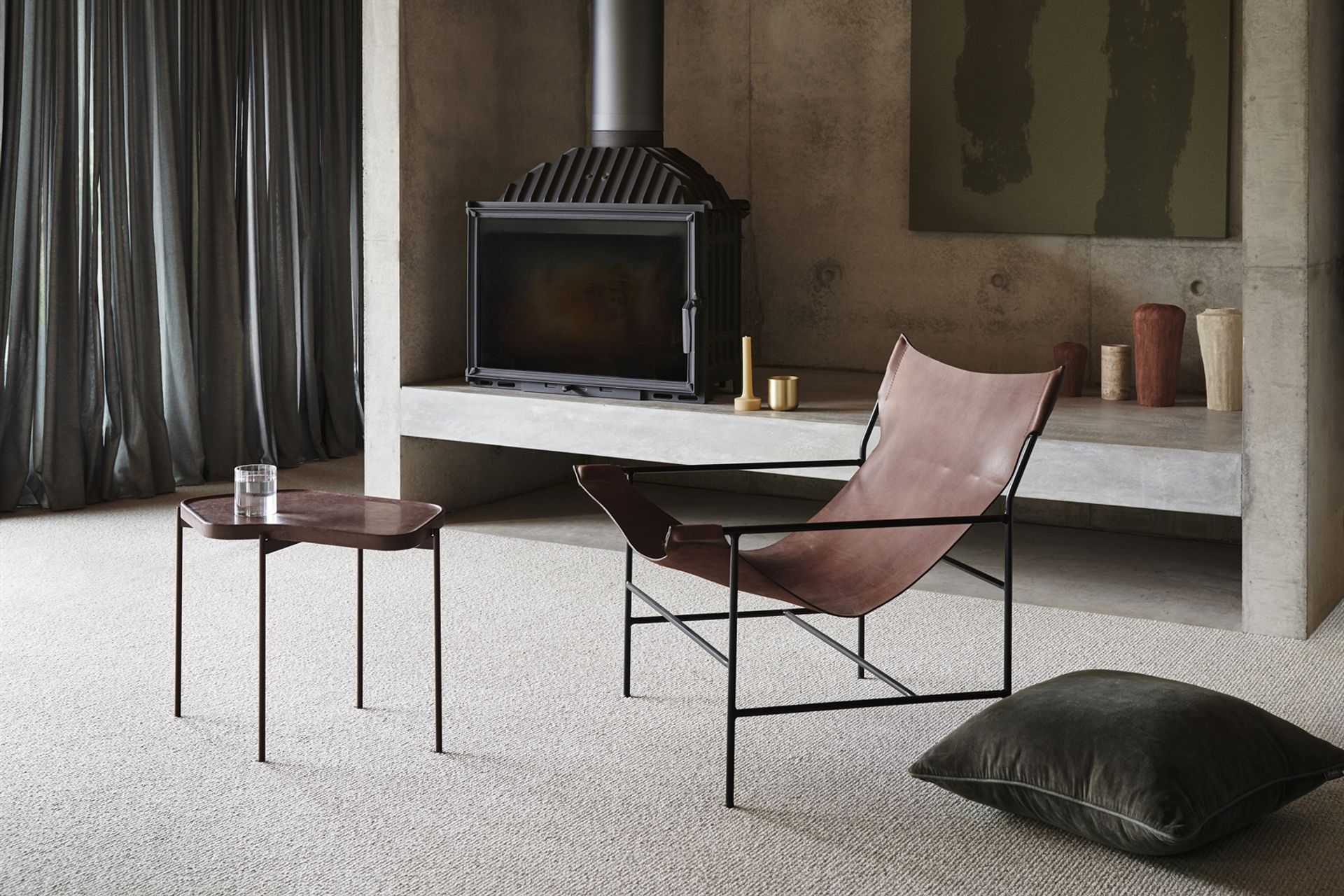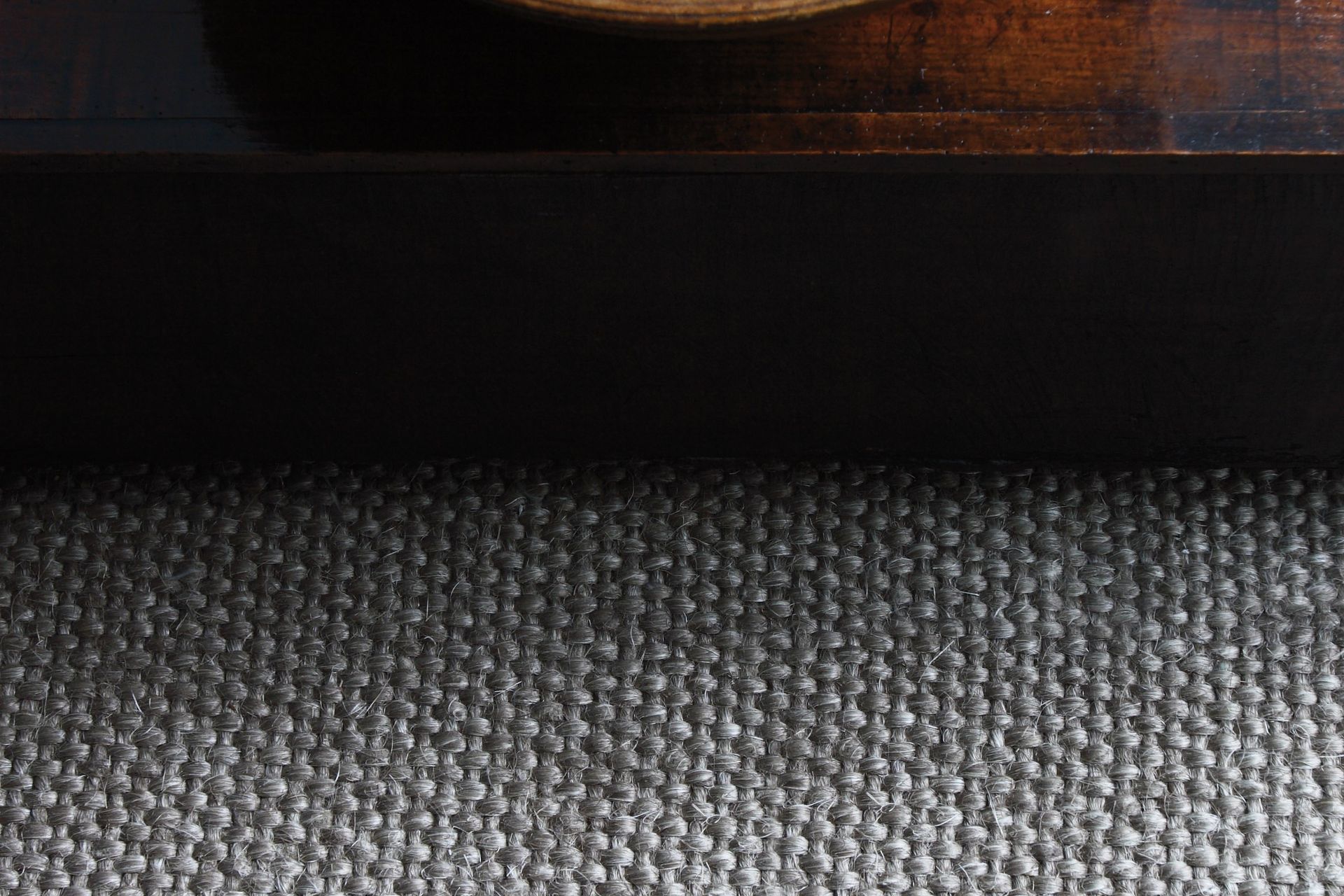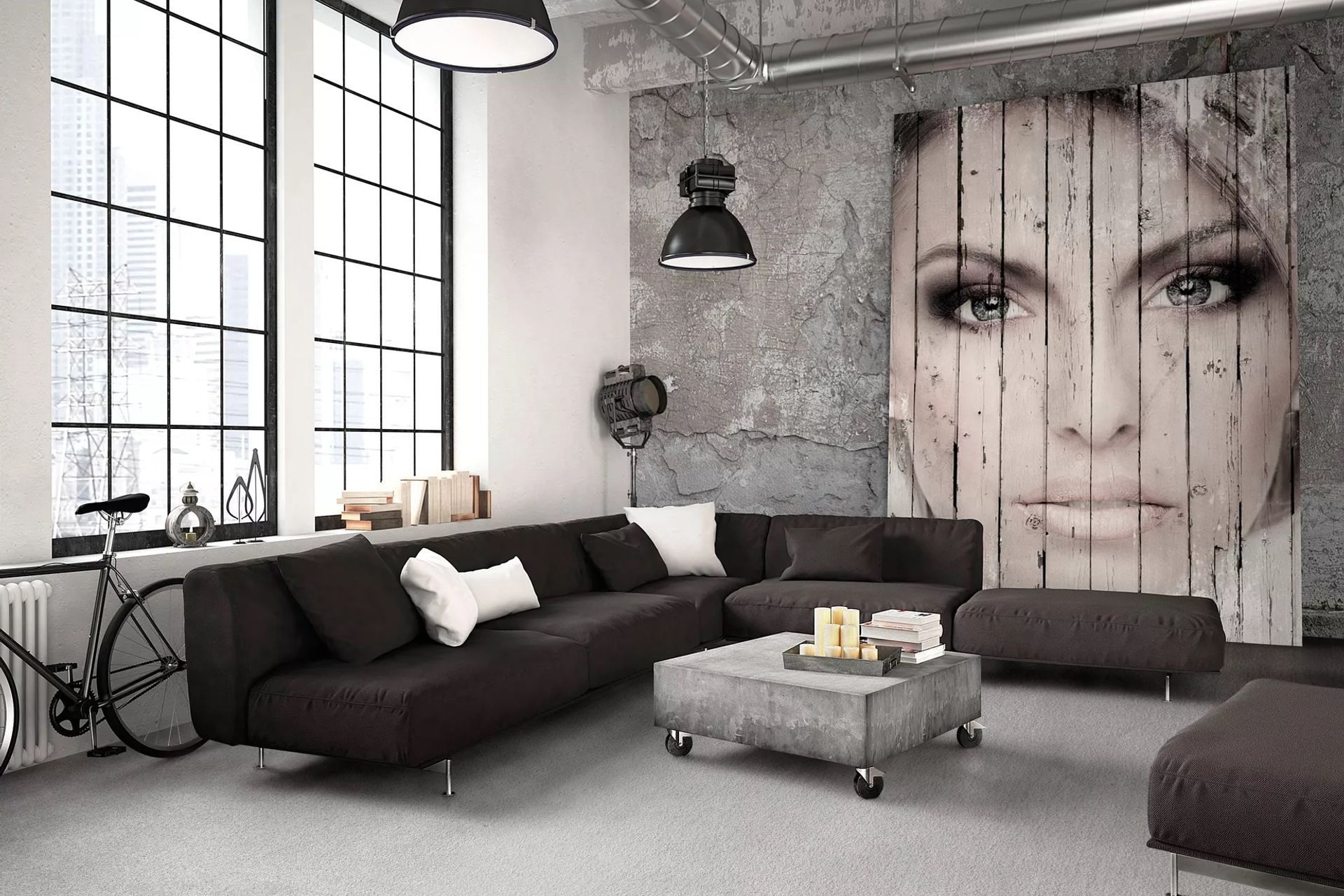A guide to the different types of carpets for your home
Written by
04 March 2024
•
13 min read

Different homeowners have different needs when it comes to carpet, which can actually be drilled down further to the specific use of the space in question. Some may require warmth and comfort while others may prioritise durability and strength. By understanding the pros and cons of each type of carpet, you'll be best placed to select one that ticks all your boxes and more.
Types of carpet material
When discussing different types of carpets, it's best to address them in two parts; by material type and the style of carpet pile. As carpets exist in a combination of both, it helps differentiate the distinct qualities a bit more clearly. Naturally, the material is usually what most people will focus on first and the most common types are described below.
1. Wool carpet
Wool carpets stand out for their natural beauty, sustainability, and resilience. Made from a material that is a renewable resource, they are an excellent choice for those after an eco-friendly and durable flooring option. Their natural crimp provides inherent resistance to crushing and matting, ensuring longevity even in high-traffic areas. Wool carpets are excellent insulators, contributing to a comfortable indoor climate year-round, and have the added benefits of being fire-resistant and able to regulate indoor humidity levels through their moisture-absorbing properties. Furthermore, the soft and luxurious feel of wool underfoot adds an element of comfort and sophistication to any space.
However, wool carpets can come with higher initial costs compared to synthetic options, reflecting their quality and the benefits they provide. They may also be susceptible to moth and carpet beetle damage, require prompt attention to spills to prevent staining, and need regular maintenance to maintain their appearance. Additionally, wool carpets can fade with prolonged exposure to direct sunlight and may feel damp in very humid conditions due to their moisture-absorbing nature.
Pros
- Eco-friendly and durable carpet choice
- Resistance to crushing, matting and fire
- Excellent insulator and moisture-absorbing properties
- Soft, luxurious feel underfoot
Cons
- Higher initial costs compared to synthetic fibres
- Some susceptibility to moth and carpet beetle damage
- Spills require prompt action to prevent staining
- May fade with prolonged exposure to direct sunlight
2. Nylon carpet
Nylon carpets have exceptional durability, making them an ideal choice for homes and commercial spaces alike. Nylon's synthetic composition ensures it retains its shape and texture over time, even in high-traffic areas. It is renowned for its ability to resist stains and fading, maintaining its vibrant colour and original appearance for years. Nylon carpets are also available in a wide range of colours and styles to fit various interior design styles and personal tastes. They are a type of carpet that is always in a state of evolution, due to the synthetic nature and advancements in manufacture that allow the progression of things like stain-resistant treatments, colourfast dyes and more.
Despite their many advantages, nylon carpets come with a few drawbacks. They are generally more expensive than other synthetic carpets, such as polyester or polypropylene, which may deter budget-conscious shoppers. Nylon carpets can also generate static electricity, which can be a nuisance during drier months or in climates prone to low humidity. While nylon is resistant to moisture and mildew, it can still absorb spills if not treated promptly, potentially leading to stains if not cleaned properly. While nylon carpets are durable and long-lasting, their environmental impact is a consideration for those seeking sustainable flooring options, as nylon is a petroleum-based product and not as eco-friendly as natural fibres like wool.
Pros
- Exceptional durability in residential and commercial settings
- Maintains its original appearance for years
- Available in a wide variety of colours and styles
- Continual evolving features due to technological advancements
Cons
- Often one of the more expensive synthetic options
- Can generate static electricity in some environments
- Petroleum-based product
3. Polyester carpet
Polyester carpets offer striking colour clarity, softness, and strong stain and fade resistance, making them a popular choice for households looking for both style and functionality. Their fade resistance is one of their most popular features, keeping their vibrancy even in sun-exposed areas. Polyester's resistance to stains makes cleaning and maintenance a breeze, an ideal quality for homes with pets or children. Additionally, they are often more affordable than most alternatives, providing a cost-effective flooring solution that does not compromise on appearance or comfort. Their soft texture makes them a cosy addition to bedrooms and living areas, where comfort underfoot is a priority.
In terms of downsides, they are not quite as durable as nylon or wool carpets, making them less suitable for high-traffic areas. While they excel in stain resistance, their ability to bounce back from compression is not as strong, meaning that furniture marks and foot traffic can leave more permanent indentations over time. Polyester fibres are prone to oil-based stains, which can be challenging to remove. They are also derived from petroleum products which can be off-putting for eco-conscious consumers.
Pros
- Striking colour clarity and softness
- Strong stain and fade resistance
- One of the most cost-effective types of carpet
Cons
- Not as durable as some other options
- Furniture marks can leave permanent indentations over time
- Petroleum-based product
Related article: The cost of carpet in New Zealand — pricing guide for 2024
4. Polypropylene (Olefin) carpet
Polypropylene (Olefin) carpets are known for their exceptional stain and moisture resistance, making them an excellent choice for areas prone to spills or damp conditions, such as basements, kitchens, and outdoor spaces. The synthetic fibres of polypropylene carpets do not absorb water, which not only prevents staining but also inhibits the growth of mould and mildew, contributing to a healthier indoor or outdoor environment. This characteristic, combined with their affordability, makes olefin carpets a cost-effective flooring solution for both residential and commercial settings. Additionally, these carpets are lightweight, easy to clean, and resistant to fading, ensuring they maintain their appearance under sun exposure and through regular cleaning routines.
Polypropylene carpets do have some limitations. They are less resilient than nylon or wool carpets, which means they can become matted and worn in high-traffic areas more quickly. The fibre's lower resistance to heat can lead to fibre damage from friction, such as dragging furniture across the carpet or even from the heat generated by heavy foot traffic. This susceptibility means that olefin carpets may not be the best choice for areas where durability and long-term appearance retention are crucial. While they are excellent for stain resistance, they can attract oil-based stains, which can be difficult to clean.
Pros
- Moisture resistance makes them ideal for areas prone to spills
- This quality also inhibits the growth of mould and mildew
- Lightweight and easy to clean
Cons
- Less resilient than wool and nylon carpet
- Low heat resistance can lead to fibre damage from friction
- Can attract oil-based stains
5. Blend carpet
Blend carpets, particularly those combining wool and synthetic fibres like nylon or polyester, offer a compelling middle ground for homeowners in New Zealand. These blends harness the natural resilience, comfort, and sustainability of wool with the added durability, stain resistance, and cost-effectiveness of synthetic fibres. This synergy results in carpets that are not only softer and warmer than their fully synthetic counterparts but also more affordable and easier to maintain than pure wool carpets. The blend enhances the carpet's overall performance, making it suitable for various settings, from high-traffic areas to elegant living spaces, while still maintaining a touch of the natural luxury that wool provides.
While wool blend carpets mitigate some of the drawbacks of both wool and synthetic carpets, they also inherit a combination of their challenges. The presence of wool means these carpets can still attract moths and carpet beetles, albeit to a lesser extent, and may require more careful cleaning and maintenance to preserve their natural fibres. Additionally, while the synthetic component improves stain resistance, it may not match the level of some fully synthetic options, potentially making these carpets less ideal for areas prone to spills and stains.
Pros
- Natural resilience, comfort and sustainability of wool carpet
- Durability, stain resistance and cost-effectiveness of synthetic carpets
- Suitable for a variety of settings
Cons
- Small chance of attracting moths and carpet beetles
- Some maintenance is still required
- Not completely stain-resistant
6. Sisal carpet
Sisal carpets have a lot of admirers in New Zealand due to their natural, organic appearance and durability. Made from the fibres of the Agave sisalana plant, sisal carpets offer a distinct, textured look that can complement a wide range of interior designs, from rustic to modern. These carpets are particularly appreciated for their strength and ability to withstand regular wear, making them suitable for high-traffic areas. Additionally, the natural fibres of sisal carpets contribute to a healthier indoor environment by not emitting volatile organic compounds (VOCs), which can be present in some synthetic carpets. Their coarse texture also provides a natural grip, reducing the risk of slips and falls.
Sisal carpets are sometimes seen as an acquired taste due to the very texture responsible for their keen following. As mentioned, it is coarse which can make them less comfortable underfoot compared to softer carpet options. Sisal's natural fibres are also highly absorbent, meaning spills can quickly lead to staining if not immediately addressed. This characteristic makes sisal carpets more challenging to maintain, especially in family households. Additionally, sisal carpets cannot be cleaned with water as it can cause shrinkage or warping, necessitating professional cleaning for serious spills.
Pros
- Natural, organic look and renewable resource
- Able to withstand regular wear
- Coarse texture reduces the risk of slips and falls
Cons
- Natural aesthetics aren't for all
- Can feel hard and rough underfoot
- Highly absorbent which can lead to staining
7. Triexta carpet
Triexta carpets have gained popularity for their durability and softness. Made from a synthetic fibre that incorporates bio-based materials, triexta offers a lower environmental impact compared to purely petroleum-based carpets, aligning with the growing demand for more sustainable living solutions. It boasts superior stain resistance, often without the need for additional chemical treatments and retains its shape and texture over time. Its softness rivals that of nylon and even wool, offering a plush walking experience that does not compromise on performance.
The cost of triexta can be higher than some traditional synthetic options, such as polyester or polypropylene, due to its advanced technology and performance features. This might make it less appealing to those on a tight budget, despite its long-term durability and reduced maintenance costs. Additionally, while its market presence is growing, triexta is relatively new compared to more established fibres like nylon and wool, which means there may be fewer styles and colours available.
Pros
- One of the newer types of carpet
- Incorporates bio-based materials giving it eco-friendly credentials
- Offers a soft, plush walking experience
Cons
- Cost can be higher than other options
- Relatively new carpet type with fewer options in some instances
Related article: A step-by-step guide to choosing the right carpet for your home
Styles of carpet piles
Having covered the main carpet materials we now transition to the style of carpet pile, of which you'll find three main types which have been discussed below.
8. Cut pile carpet
Cut pile carpet is created by cutting the yarn loops to produce an upright pile that feels soft and plush underfoot, offering a level of comfort. The cut ends of the fibres can reflect light differently, giving the carpet a rich, inviting look that adds warmth and depth to interior spaces. The cut pile technique results in a variety of textures, densities and types within this style. Examples include the dense but soft upright fibres of Saxony carpet and the tight, twisted and textured fibres of a frieze carpet. This diversity allows homeowners to choose the perfect match for their decor and lifestyle needs.
The softness and plush texture of cut pile carpets can also make them more susceptible to showing footprints and vacuum tracks, particularly in the case of Saxony carpet and other densely piled styles. This can require more frequent maintenance to keep the carpets looking their best. Additionally, cut pile carpets, depending on the fibre used, may wear down more quickly in high-traffic areas compared to loop pile carpets (more on this next), which can retain their shape and durability better over time.
Pros
- Soft, plush feeling underfoot
- Inviting and warm look
- Range of types, like saxony and frieze carpet, to choose from
Cons
- Softness makes it susceptible to footprints and vacuum cleaner tracks
- This can require more ongoing maintenance
- May wear down depending on material used
9. Loop pile carpet
Loop pile carpets are those where the loops are uncut which helps the carpet maintain its structure and appearance over time. This helps the carpet resist matting and crushing that can occur with softer pile types. They are a great choice for busy commercial spaces and household areas where longevity and low maintenance are the key priorities. Additionally, their tight loop construction can trap less dirt and debris, simplifying the cleaning process. The variety of loop sizes and patterns available also allows for a range of aesthetic choices, from elegant and subtle designs to more textured and visually interesting options.
The firm surface of loop pile carpets, while strong, may not provide the same level of comfort underfoot as softer, cut pile carpets. These loops can be prone to snagging from pets' claws or sharp objects, potentially leading to pulled threads and damage that can be difficult to repair without noticeable patching. This makes loop pile carpets less ideal for households with pets or in areas where sharp objects might be frequently moved across the floor.
Pros
- Resistant to matting and crushing
- Good longevity and low maintenance
- Variety of loop sizes, patterns and aesthetic choices
Cons
- May not be as comfortable to some as cut pile carpets
- Loops prone to snagging from pets' claws
- Difficult to repair without noticeable patching
10. Textured carpets
Textured carpets are a combination of cut and loop pile techniques, creating a multi-dimensional surface that effectively masks signs of wear and tear. The varied texture not only adds a visual depth to the flooring but also enhances its aesthetic appeal, making it versatile enough to complement a wide range of interior designs. Additionally, textured carpets are known for their durability, as the construction process lends itself to a stronger, more resilient carpet that can withstand the demands of daily life.
As a somewhat hybrid choice of the two aforementioned styles, it also takes on some of their challenges. While the textured surface does a great job of hiding wear and soil, it doesn't eliminate the need for regular maintenance. Depending on the quality and style of the carpet, the textured surface can also sometimes feel less soft underfoot compared to a plush carpet like saxony.
Pros
- Combination of cut and loop pile techniques
- Multi-dimensional surface that masks signs of wear and tear
- Versatile in design and durable in construction
Cons
- Some maintenance is still required
- Harder underfoot compared to plush carpet alternatives
The most common types of carpets covered
With the main types of carpet covered with respect to material and carpet styles, you're now in a great position to make an informed decision for your home or business. We're lucky to have some excellent options in New Zealand to choose from making it a really exciting process to go through. Having made the right choice, you'll have no regrets and notice the immediate improvement it makes to your space now and in future years to come. If in doubt, talk to a trusted carpet supplier and take advantage of their experience in recommending the best carpets for all given situations.
Related article: How to decorate a living room — 13 tips for chic styling








